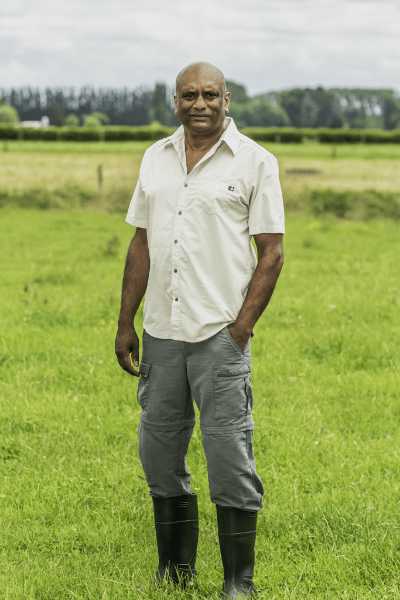Dire Soil Conditions In Taranaki Prompts Call for Urgent Action On Liming From Expert Soil Scientist Dr Gordon Rajendram

This year’s dire drought situation in Taranaki has highlighted the need for the region’s farmers to take a closer look at how they manage their soil in the future.
That’s according to independent Hamilton soil scientist Dr Gordon Rajendram who visited the province recently at the invitation of local farmers.
With a PhD in soil fertility and more than 40 years of research experience, Dr Rajendram is one of New Zealand’s most qualified independent soil scientists.
“Now is the time to prepare for future dry spells by improving soil health—starting with correcting soil pH through liming. I don’t believe this year is a one-off weather event and predict that there will be further droughts of this scale in the future,” Dr Rajendram says.
“Taranaki farmers are now at the whim of fertiliser companies,” says Dr Rajendram, a former long-time AgResearch soil scientist. “But the most limiting factor in farming success isn’t fertiliser—it’s water. And if your roots aren’t deep enough, they won’t reach that water.”
He said that one of the key ways for Taranaki farmers to future-proof their farms will be to make the most of the nutrients already available in the farm’s eco-system—such as through proper use of effluent.
“Putting effluent back onto land on as much of your land as possibly effectively can provide a good source of nutrients,” says Dr Rajendram.
“But if the soil is too acidic, those nutrients won’t be taken up by the plant. It’s all about making sure your soil is in the right condition to use what you’ve already got.”
Research shows soils with low soil pH, will have more soil solution aluminium and this particularly so for volcanic derived soils such as that found in Taranaki. High solution aluminium retards plant root growth which in turn reduces pasture growth.
Dr Rajendram also recommends planting deeper rooting crops to help build resilience in dry conditions. “Deeper roots allow plants to access moisture lower down in the soil profile, helping maintain pasture growth even during extended dry spells”
“Taranaki’s volcanic soils are naturally acidic, which can block plants from absorbing key nutrients like nitrogen, phosphorus, and potassium. Applying lime, neutralises that acidity, improving nutrient availability, water retention, and pasture resilience,” he sad.
“It doesn’t matter if you have the best soil type in the world,” says Dr Rajendram. “If the pH is wrong, the roots won’t go down. In dry conditions, nutrients build up but aren’t available to plants without moisture. That’s why pH is so critical—correct pH supports deeper roots that can access stored moisture and nutrients.”
Research backs Dr Rajendram’s comments up.
A New Zealand study found that a single lime application increased nitrogen uptake by 26 kg/ha per year and boosted pasture yield by 8% (Wheeler, Edmeades & Morton, 1997). Liming also improves soil structure and water infiltration—key in Taranaki where heavy rainfall can lead to waterlogging or run-off on sloping paddocks.
Research conducted by MAF and AgResearch have shown that soils with good soil pH will generally not grow more pasture in spring but will grow more pasture in summer and autumn.
Dr Rajendram strongly advises Taranaki farmers to base liming decisions on soil tests. “Over-liming is just as bad as the soil can swing too far the other way and lock up nutrients,” he commented.
“Mitigate now—don’t wait for it to happen again,” he urges. “Grow more feed in summer and autumn, and give your pastures the best chance of surviving the next dry.”
References
Wheeler, D. M., Edmeades, D. C., & Morton, J. D. (1997). Effect of lime on yield, N fixation, and plant N uptake from the soil by pasture on 3 contrasting trials in New Zealand, New Zealand Journal of Agricultural Research, 40(3), 397–408. https://doi.org/10.1080/00288233.1997.9513261
Kunhikrishnan, A., et al. (2016). Functional relationships of soil acidification, liming, and greenhouse gas flux. Advances in Agronomy, 141, 99–151. https://doi.org/10.1016/bs.agron.2016.06.001
For more information, contact:
Dr Gordon Rajendram
� 021 466077
✉️ rajendram@xtra.co.nz
� www.gordonrajendramsoilscientist.co.nz
Media Enquiries:
Media PA – Phillip
� 027 458 7724
✉️ phillip@mediapa.co.nz
